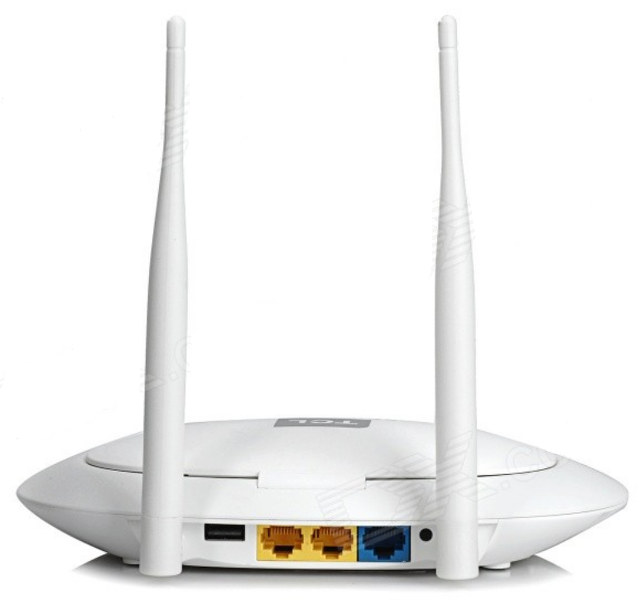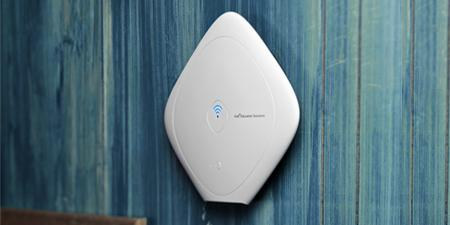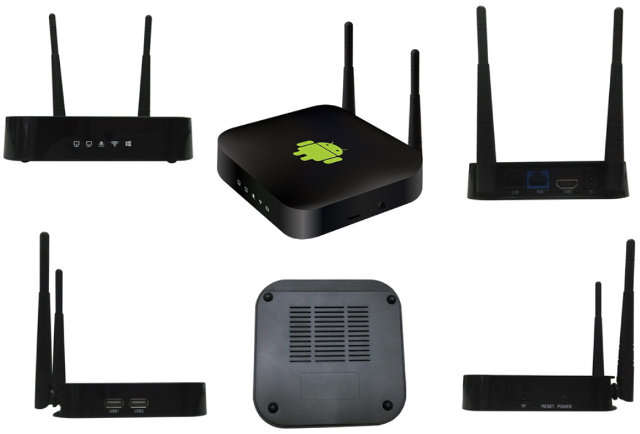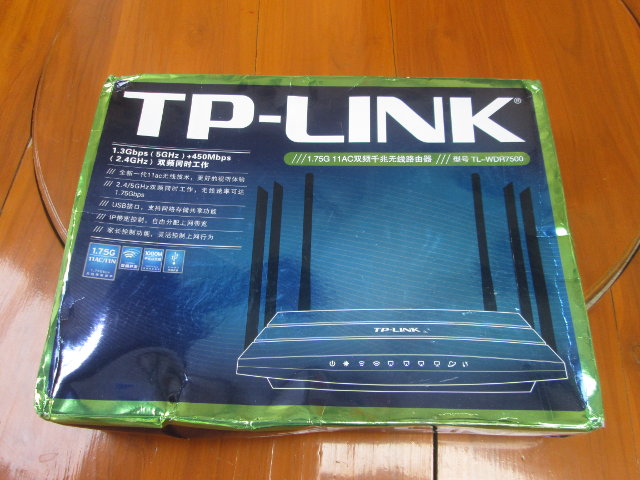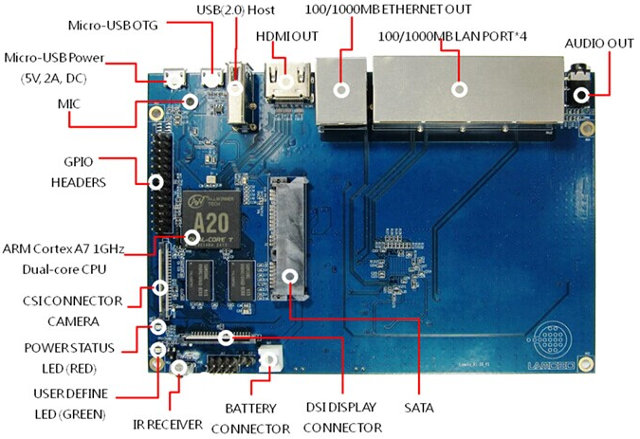Many routers now come with one or more USB ports to let you connect 3G dongles or/and storage device(s) to share the data on your local network. If you want to go with a fully integrated solution, and obvious solution is to go with a NAS, but these usually cost a bit more, so instead TCL SL-WR5028J (aka TCl T1) router could make a low cost (and low performance) NAS alternative thanks to its internal 2.5″ SATA bay, and it can be had for just $45.99 on DealExtreme. [Update: GearBest sells it for $35.98 with coupon TCLT1] TCL T1 specifications: SoC – Mediatek MT7260 MIPS WiSoC @ 580MHz System Memory – 64MB DDR2 Storage – 8MB Flash for firmware + SATA bay for 2.5″ HDD (5, 7.5 or 9mm thick hard drives are supported). Max capacity: unlimited… 🙂 Connectivity 802.11 b/g/n Wi-Fi up to 300 Mbps with two external antennas […]
Intel Education Content Access Point Is Designed for Schools with Unreliable Internet Connectivity and Power
Intel has introduced a new device that stores, manages, and publishes digital content for schools with low or intermittent connectivity and /or power. The device stores training materials in its internal storage, comes with a battery, and can be accessed by up to 50 students simultaneously. Specifications: SoC – Intel Atom Bay Trail-I E3815 Processor @ 1.46GHz with Intel HD graphics System Memory – 2GB DDR3L-1067 Storage – 8GB eMMC, Optional 500GB SATA HDD Connectivity – WiFi 802.11 a/b/g/n/ac, Wired Gigabit Ethernet, Optional 3G, Optional LTE USB – 1x USB 3.0 Misc – System and 3G/LTE LEDs, Factory reset and power buttons Power Supply – 12V/2A Battery – Lithium-ion polymer 7.4v, 4050mAh (up to 5 hours of battery life) Dimensions – 190 x 190 x 30mm Weight – 607 grams The system runs Ubuntu 12.04. The optional 500GB hard drive includes 400GB of preloaded content, and educator can use the remaining […]
Snappy Ubuntu Core is an IoT Linux Distribution for ARM and x86
Canonical has announced a version of Ubuntu specifically designed for IoT devices running Linux, with a low hardware requirements, and a new package manager called snappy, replacing apt-get for this version of Ubuntu, which provides simpler, faster, and more reliable updates, stronger security, and allows roll-backs in case something goes wrong. Easy firmware updates are something missing in most connected device, which means they are more vulnerable to potential hackers, but with snappy security updates should be able to make it regularly, so that if something like heartbleed occurs again, you know your router, home automation gateway, connected washing machine, or robot will be soon patched automatically. Let’s go through the hardware requirements first: Processor – 600 MHz processor (ARMv7 or greater, or x86) System Memory – 128 MB RAM or greater (The system itself uses 40 MB RAM) Storage – 4GB flash / storage for factory reset and system […]
Crowdfunding Report for 2014 on CNX Software Blog
Following up on my 2013 Crowdfunding Report, I’ve gone through all 55 Kickstarter and Indiegogo crowdunding projects featured on CNX Software between December 2013 and November 2014 (inclusive) to see how well they fared. The table below sort projects chronologically as they were published on this very blog. Date Project Crowdfunding Site Funded? Pledged amount / Goal Expected Delivery Actual Delivery Comments 2. Dec. 2013 Micro Python Kickstarter Yes 97,803 GBP / 15,000 GBP 03/2014 04/2014 Available @ https://micropython.org/store/#/store 5. Dec. 2013 Plugaway Kickstarter Yes $162,835 AUD / $50,000 AUD 04/2014 – People upset because of lack of updates. Project might be dead, and backers lost their money 6. Dec. 2013 AIRTAME Indiegogo Yes $1,268,332 / $160,000 05/2014 12/2014 People have started received the beta versions, after a massive 8-month delay 7. Dec. 2013 Crystal Board Kickstarter No $14,574 / $200,000 04/2014 – The project appears to be dead 10. […]
Zome ZMT-330A is Both an Android TV Box and a Wi-Fi Router
A few months ago I wrote about SinoVoip BPI-R1 board powered by Allwinner A20, and being a sort of hybrid media player / router system running Android with 5 Gigabit ports, Wi-Fi, HDMI output and SATA, but now somebody made an actual product which they call an “Android TV Box Wi-Fi Router” sold under the model name ZMT-330A, and based on Nufront NS115 dual core processor. Zome ZMT-330A specifications: SoC – Nufront NS115 dual core Cortex A9 @ 1.0GHz + Mali-400 GPU System Memory – Nufront: 512 MB DDR3 (1GB optional); Wi-Fi module: 32MB SDRAM (64MB optional) Storage – 4GB eMMC Flash (8 /16 GB optional) + micro SD slot; Wi-Fi module: 8MB SPI flash (16MB optional) Video Output – HDMI up to 1080p Video Codecs and Containers – AVI, H.265, VC-1, MPEG-2, MPEG-4, DIVD/DIVX, Real8/9/10, RM, RMVB, PMP, FLV, MP4, M4V, VOB, WMV, 3GP, MKV Connectivity – 2x 10/100M […]
TP-Link TL-WDR7500 (Archer C7) 802.11ac Router Review
With several new Android devices coming with the latest 802.11ac Wi-Fi, I decided I should buy a new router with AC1200 class or greater and Gigabit Ethernet support, and with a budget of $100. Xiaomi Mi Wi-Fi Mini router almost matched my requirements, but unfortunately only comes with Fast Ethernet ports. TP-Link Archer C7 selling for $96 Amazon US exactly matched my budget, and outmatched my requirements being an AC1750 router with 5x Gigabit Ethernet ports, and two USB ports. Since Amazon won’t ship to my location and shipping would have gone over budget, I expected to find it locally for a slightly higher price, but it ended up selling for over $200 here, allegedly because of a lifetime guarantee. Finally, I ended up buying TP-Link TL-WDR7500, the Chinese version of Archer C7 with 6 Wi-Fi antennas instead of 3, for $94.32 including shipping on Aliexpress. I’ll take some pictures […]
Banana Pi BPI-R1 Board Based on AllWinner A20 Features 5 Ethernet Ports, a SATA Interface, and More
SinoVoIP, a company known for its Banana Pi board and related spamming, has been working on another AllWinner A20 product called BPI-R1 (Banana Pi R1), a router/NAS platform that features 5 Gigabit Ethernet ports, a SATA interface, HDMI, audio output, and more. BPI-R1 Board specifications: SoC- Allwinner A20 dual core Cortex A7 processor @ 1 GHz with Mali-400MP2 GPU System Memory – 1 GB DDR3 Storage – SD card slot up to 64GB, SATA connector for hard drive or SSD up to 2TB Video output – HDMI, LVDS/RGB via DSI connectors Audio I/O – HDMI, 3.5mm stereo jack, and on-board microphone Camera – CSI connector possibly interfacing with their upcoming BPI-D1 camera Connectivity – 5x Gigabit Ethernet (RJ45) ports including 4x LAN ports, 1x WAN port, 802.11 b/g/n Wi-Fi (RTL8192CU module) with two antenna connectors. USB – 1x USB 2.0 port, 1x micro USB OTG port, 1x micro USB for […]
$25 GL.iNet 6416A is an Hackable OpenWRT Router with Easy UART and GPIO Access
There are plenty of low cost routers supporting OpenWRT, but GL.iNet 6416A has several advantages compared to devices like TP-Link WR703N. Both are based on Atheros AR9931, but GL.iNet router has more memory and storage (64MB RAM + 16MB Flash vs 32MB RAM + 4MB Flash), two Ethernet ports instead of just one, and 6 GPIOs, the serial pins, and power signals (5V, 3.3V and GND) are all easily accessible via though holes or headers. Gl.iNet 6416A can be purchased for about $25 on DealExtreme or Amazon US, and it used to be listed on eBay, but is now out of stock. Gl/iNET 6416A specifications: Wi-Fi SoC – Atheros AR9331 MIPS processor @ 400 MHz System Memory – 64MB RAM Storage – 16MB Flash Connectivity – 2x 10/100 Mbit Ethernet ports, 802.11 b/g/n Wi-FI up to 150Mbps USB – 1x USB 2.0 port, 1x micro USB port for power Debugging […]


